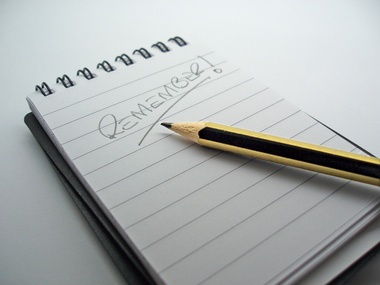Memory is not something you don’t have; it has little to do with genetics or environment. The problem has never been that we have “faulty” equipment; that our brains are broken or don’t work. The problem has always been awareness. We haven’t been taught how to properly use our brains. For most people, it’s a just a muscle that is underused and underdeveloped. It’s turns out that having a good memory has more to do with your strategy than it does with your mental hardware. The people that have great memories follow a strategic process. This process is based on the technology of Neuro-Linguistics Programming (NLP).
Memory and The Spelling Strategy
There are an infinite number of ways to learn how to spell. Most of the average to poor spellers learn phonetically. That means learning to spell based on the sounds of the letters and words – an auditory strategy. It turns out that this strategy is not the most effective way to become a great speller. The real trail-blazers, the people who consistently produce top scores learn how to spell visually – a visual strategy.
3 Tips to Improve Memory
The spelling strategy is just one example of how visual properties help improve memory. If you want to improve your memory, start using a visual strategy. You can start right away with these 3 tips: 1. Begin to access your visual cues. Access the visually memorable part of your brain by looking up and to the left. You see when you look up and to the left you access your visual memory. These are the pictures, images and movies that have flashed on your mind from the past. You can do this deliberately right now to find items you lost or misplaced. Have you lost your keys or misplaced your wallet? You can find these items in your mind. Outer world images are stored inside. Just move your eyes by looking up and to the left and look for your wallet in your mind. Where did you see it last? 2. Another way to use this approach is in conversation. The next time you speak with someone, be sure to play with the visual strategy. When someone is speaking to you, start to create pictures and images in your mind. Listen to people as if they were telling you a story. And as they tell you their story, build a motion picture in your mind. Add visual images and pictures to the story. The richer the pictures, the easier it will be to remember. I’ve used this strategy to avoid taking meeting minutes. All I did was add pictures to the story I was hearing. A picture says a thousand words. Some people were amazed at how good my memory was, but there’s no trick to it – just a strategy. Use it or loose it. 3. Practice changing your physiology. Make sure to speak to someone by keeping your head up and shoulders back. Stand up straight when possible. This makes it so much easier to look up and make pictures. And since your memory is accessed through the picture-making magic comes from looking up and to the left, that’s where you want to be. Practice seeing the world differently. Use the muscle between your ears. You’ve got one of the most precious gifts the world has ever known; your marvelous mind.
